|
Ship's Log -
News
|
|
05/11/2016 |
|
 The section named bareHull.3D is a 2D/3D computational geometry and analysis database mainly but not limited to the naval architecture and marine engineering interests. The first version has been released at around 1999. This section was de-activated for a decade due to a couple of reasons. The section named bareHull.3D is a 2D/3D computational geometry and analysis database mainly but not limited to the naval architecture and marine engineering interests. The first version has been released at around 1999. This section was de-activated for a decade due to a couple of reasons.
After a very long delay the bareHull.3D has been completely rebuilt from scratch and launched again at 01 November 2016. This a beta release and there are not much stuff on the model database yet. After some testing on the ocean if everything goes well the updating procedure will begin. Since work in progress there may be significant feature changes.
|
|
Read more...
|
|
|
Ship's Log -
Engineering
|
|
15/03/2016 |
|
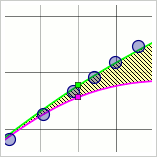 The ability of accurately predicting transitional fluid flow behavior is important to the design of many engineering systems. From a design standpoint, Reynolds Averaged Navier-Stokes based CFD represents a reasonable compromise between accuracy and expense. More recent research efforts for RANS based CFD have focused on models specifically developed to predict transitional behavior. The ability of accurately predicting transitional fluid flow behavior is important to the design of many engineering systems. From a design standpoint, Reynolds Averaged Navier-Stokes based CFD represents a reasonable compromise between accuracy and expense. More recent research efforts for RANS based CFD have focused on models specifically developed to predict transitional behavior.
The k-kl-omega model is a new transitional turbulence model which is described in [1]. However in 2013 it is appeared that this paper has several errors which must be corrected. In OpenFOAM these corrections have been applied with the version 2.4.0 and later.
|
|
Read more...
|
|
Ship's Log -
News
|
|
27/12/2015 |
|
As today, the Virtual Marine Arsenal directory has been extensively updated. Total of 51 software has been added and one removed. Most of the the new additions went to the Computer Aided Engineering and Specialized Tools categories.
|
|
Read more...
|
|
Ship's Log -
Software
|
|
05/08/2015 |
|
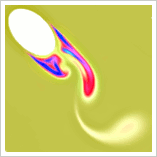 k-kl-omega is a relatively new transition turbulence model. Since the version 2.1.0 this model has been implemented in OpenFOAM. The model is based on the k-omega with an additional transport equation included to predict low-frequency velocity fluctuations that trigger transition in the boundary layer [1]. k-kl-omega is a relatively new transition turbulence model. Since the version 2.1.0 this model has been implemented in OpenFOAM. The model is based on the k-omega with an additional transport equation included to predict low-frequency velocity fluctuations that trigger transition in the boundary layer [1].
According to the notes in OpenFOAM source code, the latest version which is 2.4.0 as today has a significant update for the implementation of this turbulence model. Original note in the "kkLOmega.H (OpenFOAM-2.4.0.tgz)" is as follows:
|
|
Read more...
|
|
Ship's Log -
Engineering
|
|
28/07/2015 |
|
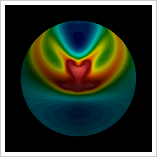 Prolate spheroids can be considered as simple geometries. On the other hand the flow around a prolate spheroid at incidence offers a complex three-dimensional turbulent shear flows, featuring stagnation flow, a highly three-dimensional boundary layer, cross-flow separation, the formation and evolution of free-vortex sheets and stream-wise vortices etc. Prolate spheroids can be considered as simple geometries. On the other hand the flow around a prolate spheroid at incidence offers a complex three-dimensional turbulent shear flows, featuring stagnation flow, a highly three-dimensional boundary layer, cross-flow separation, the formation and evolution of free-vortex sheets and stream-wise vortices etc.
Since these flow features are important in the area of aerodynamic and hydrodynamic design of vehicles, they have been the basis of much research over the years and many experimental studies have provided comprehensive data that reveals the salient physics of these king of flows specially for 3:1 and 6:1 prolate spheroids. The 6:1 case has been most widely researched though.
|
|
Read more...
|
|
Ship's Log -
Software
|
|
27/07/2015 |
|
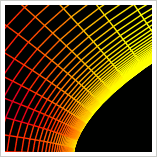
Construct2D is an open source preprocessor for building the computational structured grids around wing sections. It may also work for other shapes though. Basically it works on 2D but also has a limited 3D capability by extruding the 3D grid on z axis.
The software has no GUI and written in Fortran. Indeed it does not need a GUI and works perfectly and efficiently via the command line. Construct2D can be compiled on different operating systems but I am using it on Linux and my experience is based on that OS only. On Linux the installation procedure is simple and smooth.
|
|
Read more...
|
|
Ship's Log -
Materials
|
|
01/03/2002 |
|
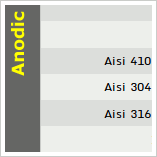 Corrosion is either chemical or electrochemical in nature. The distinction between chemical and electrochemical corrosion is based on the corrosion causing mechanism. Chemical corrosion is the direct result of exposure of a material to a chemical and is governed by the kinetics of chemical reactions. Corrosion is either chemical or electrochemical in nature. The distinction between chemical and electrochemical corrosion is based on the corrosion causing mechanism. Chemical corrosion is the direct result of exposure of a material to a chemical and is governed by the kinetics of chemical reactions.
Electrochemical corrosion is the dissolution of a metal through the oxidation process and can be defined as "degradation of a metal by an electrochemical reaction with its environment". This phomena also known as galvanic corrision.
|
|
Read more...
|
|
|